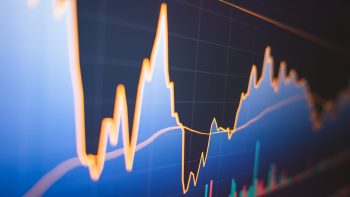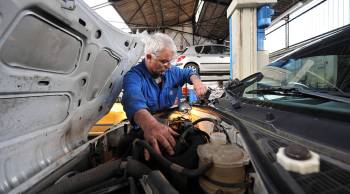Kai Ryssdal: There’s not much joy in economic statistics-ville right at the moment. You wanna get depressed, take a peek at the jobs number or the gross domestic product report. But maybe we’re measuring the wrong thing. I mean, when you spot a friend passing by do you say: How’s your GDP? I’m thinking you probably go with: How’re you doing? The state of Maryland is working on a way figuring out people are doing by tracking stuff that GDP misses.
Our series, Economy 4.0 is all about how to make the global economy work better for more people. So today, Marketplace’s David Brancaccio reports on the Maryland Genuine Progress Indicator.
David Brancaccio: Question: How much is it worth to play baseball with your kids? Or maybe play guitar with some friends? Not to be crass, but I’m looking for a dollar figure.
Matt Assenmacher: We always say what would you rather have: more money or more time? And I bet you people will always say more time.
Matt Assenmacher lives with his wife Lisa and 8-year-old son in Silver Spring, Md. He’s a master carpenter who restores historic houses scattered clear around the Washington Beltway, so his commute can stretch from an hour and a half to three hours a day. This chops away at the little leisure time that he could otherwise spend playing guitar.
Eli: Dad, not like that.
That’s him with his son, Eli, on bongos. Once upon a time, Matt used to play guitar in a Cajun band.
Assenmacher: I used to play a lot more.
Brancaccio: What happened? Why not play more?
Assenmacher: There’s no time. You know you want to do everything, and you end up not doing very much.
He and a lot of other Americans. And this loss of leisure is typically not accounted for when the economy is assessed, it just comes out our collective hides. But in Maryland, a dollar estimate is being calculated, one piece of the state’s wider assessment of well-being called the Maryland Genuine Progress Indicator.
Frank Skinner at the Maryland Department of Labor says when it comes to lost leisure time, some things really were better back in the old days.
Frank Skinner: With 1969 being the year that the United States had the most leisure time per capita — and from that we subtract the amount of leisure time lost and then we multiply that by the median wage.
And here it is: The value of all Marylanders’ lost leisure time.
Skinner: Between $11.5 and $12.5 billion per year.
That’s a big number, very close to all Maryland collects in taxes and fees annually. And the Genuine Progress Indicator doesn’t stop there. It measures 25 other things: from the cost of cleaning up pollution, to the cost of divorces and crime, to the value of volunteer work.
Martin O’Malley: What they attempt to do is to quantify and measure whether we are or whether we are not safeguarding the precious resources that define our quality of life.
That’s Maryland’s Gov. Martin O’Malley. He’s a Democrat who says he’s all about economic growth, but thinks policymakers have to subtract the kind of growth that’s bad for people, while still measuring the kind that’s good.
Brancaccio: You don’t want to just count jobs?
O’Malley: Well jobs are important. Jobs are critically important. But all of those new ways of doing things create a tremendous amount of jobs and tremendous economic growth.
And while there are benefits to being governor, leisure time is not one.
Brancaccio: You used to be quite a guitar player I understand?
O’Malley: I was, there was nothing leisurely about the way I played guitar.
Brancaccio: You still doing much of that?
O’Malley: Every now and again.
Brancaccio: Why not do it more?
O’Malley: Uh, hard to schedule.
He’s been known to front a Celtic folk rock band called O’Malley’s March, more so in his pre-governor days.
O’Malley’s March song
And here’s what the indicators for Maryland are showing, beyond all the time for fun and family getting sucked away. While traditional GDP-style calculations of economic growth in the state have been trending ever upward over the years — like the waistlines of beer drinkers in a honky tonk — well-being in Maryland has been stuck in place for three decades now. This pattern that well-being does not go hand-in-hand with GDP growth is echoed in other states that use alternative measures, including Minnesota, Ohio and Utah.
In Silver Spring, Md., I’m David Brancaccio for Marketplace.
There’s a lot happening in the world. Through it all, Marketplace is here for you.
You rely on Marketplace to break down the world’s events and tell you how it affects you in a fact-based, approachable way. We rely on your financial support to keep making that possible.
Your donation today powers the independent journalism that you rely on. For just $5/month, you can help sustain Marketplace so we can keep reporting on the things that matter to you.


















